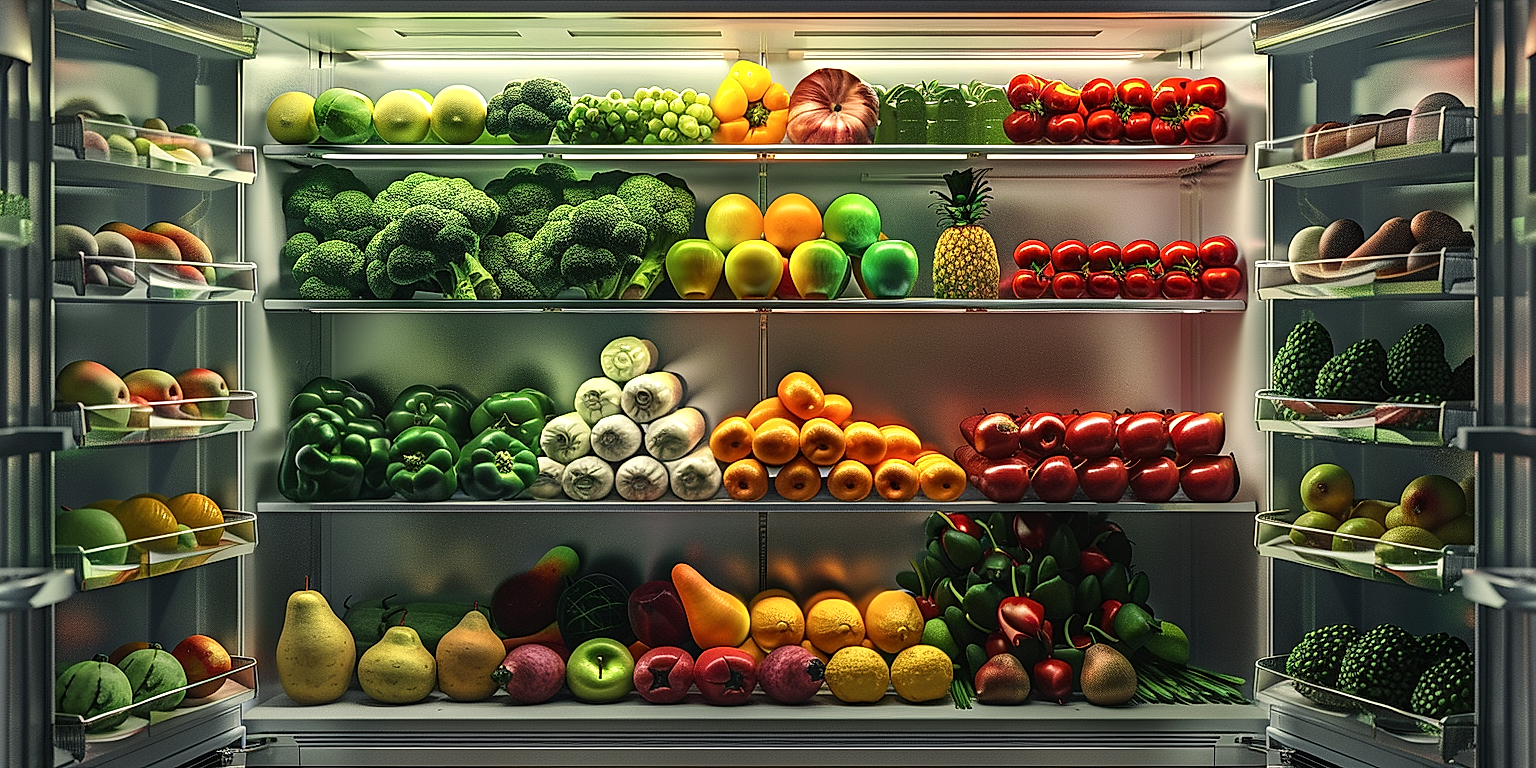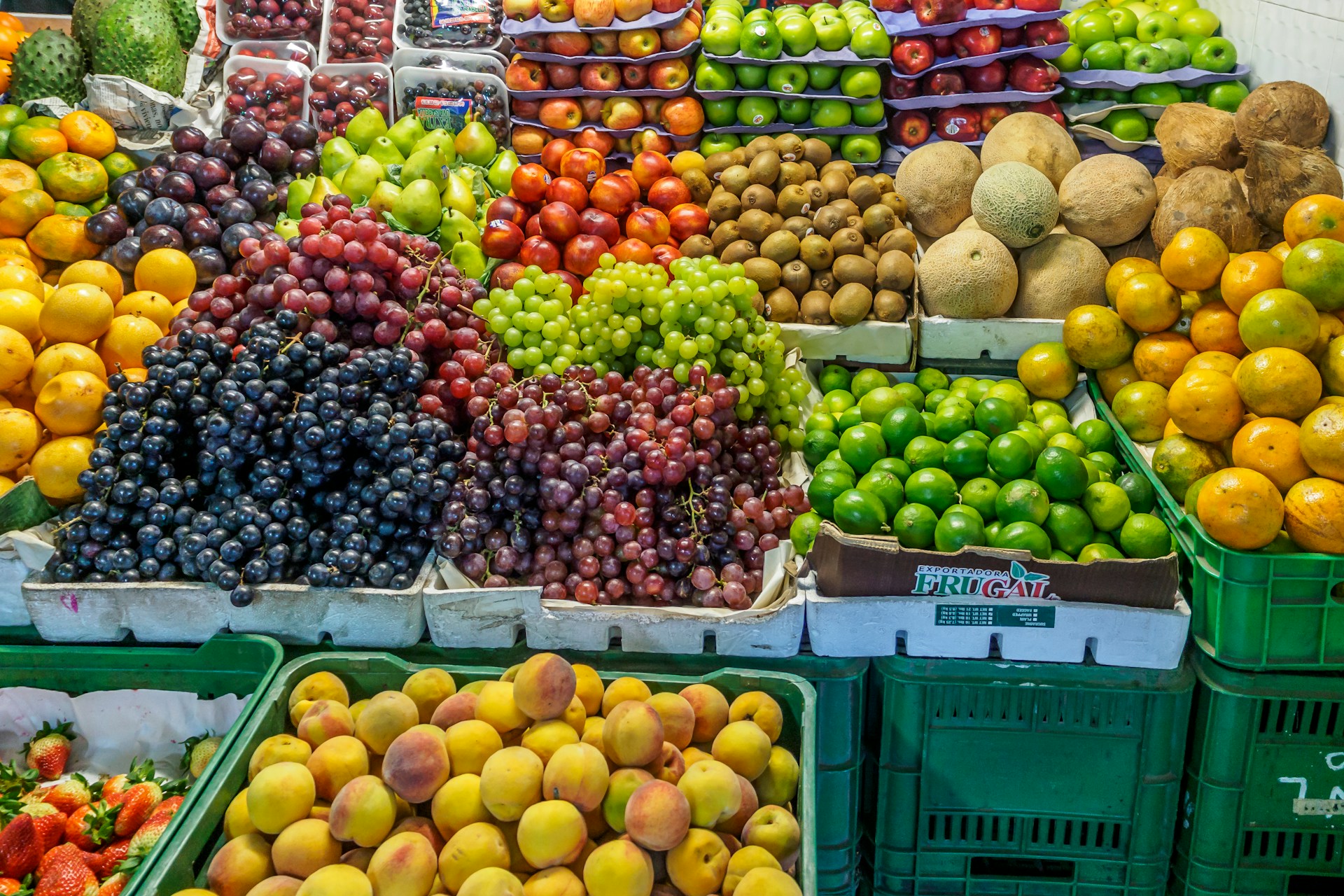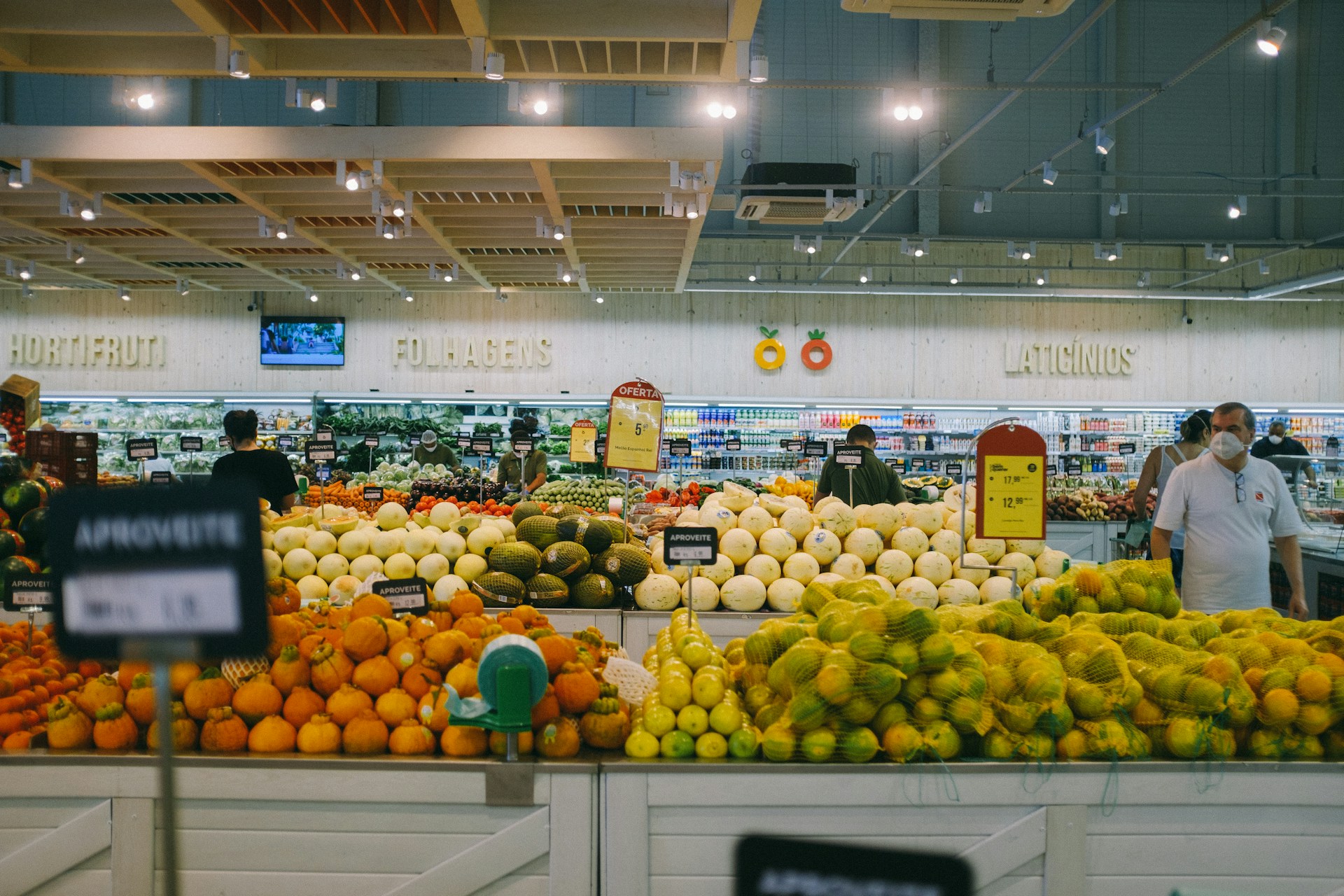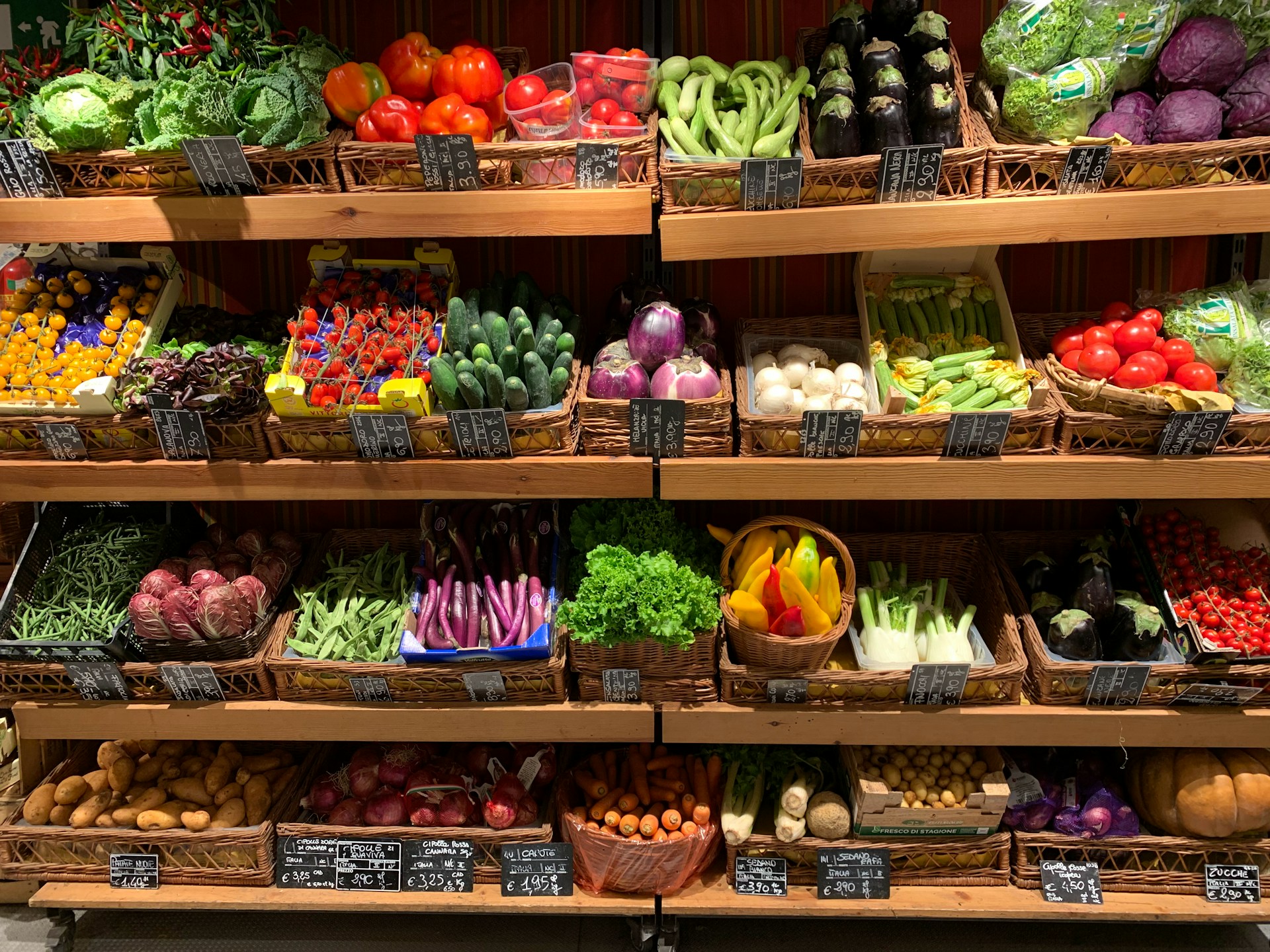In the thriving world of retail, particularly in grocery chains, one critical factor often overlooked is customer education.
Specifically, customers often lack adequate knowledge about the life cycle of the products they purchase, particularly fresh produce.
This knowledge gap can lead to waste, dissatisfaction, and a poor shopping experience.
With the right guidance, customers can make informed decisions, reduce waste, and get better value for their money.
This article aims to provide practical, user-friendly tips to help customers understand the shelf life of fruits and vegetables.
It aims to empower customers to enhance their shopping experience and maximize the benefits from their purchases.
Contents
- Customer Education Tips On Produce Shelf Life
- 1. Store Unripe Fruits at Room Temperature
- 2. Store ripe fruits in the refrigerator.
- 3. Avoid storing fruits and vegetables together.
- 4. Store Leafy Greens in a Sealed Container
- 5. Freeze Excess Vegetables for Longer Shelf Life
- 6. Don’t wash produce until ready to consume.
- 7. Keep Potatoes, Onions, and Garlic in Cool, Dark Area
- The Bottom Line
Customer Education Tips On Produce Shelf Life
1. Store Unripe Fruits at Room Temperature
Ensuring the freshness and quality of your fruits significantly depends on how they are stored.
One key rule to remember is to store unripe fruits at room temperature.
This rule applies to many fruits, including but not limited to avocados, bananas, peaches, pears, plums, and tomatoes – all these fruits continue to ripen after they’ve been picked.
This process is known as post-harvest ripening.
At room temperature, unripe fruits are allowed to reach their peak ripeness, enhancing their flavor and texture profiles.
The reason behind this is to facilitate the fruit’s own natural enzymes which are mostly active at room temperature.
Once the fruit has ripened at room temperature, it should not be left out longer, as this will lead it to overripen and start decaying.
Providing appropriate temperature settings is crucial for the preservation of your fruits.
Most of the fruits release a gas called ethylene that speeds up the ripening process.
So, in a nutshell, storing unripe fruits at room temperature accelerates their ripening and makes them edible faster.
But it’s crucial not to store all fruits and vegetables together at room temperature since some fruits like apples or bananas release more ethylene gas than others and might cause other produce to spoil quicker.
Using this strategy of storing unripe fruits at room temperature, not only do you get to enjoy your fruits at their peak ripeness, but it also helps reduce food waste.
It is surprising, yet many consumers are unaware of this optimal practice, which underscores the importance of customer education regarding produce shelf life.
To make this process simpler, some people use a fruit bowl set out on the kitchen counter or table to store their unripe fruits.
However, keep a check on the fruit daily to detect when it has ripened and needs to be moved to slower ripening conditions in the refrigerator.
2. Store ripe fruits in the refrigerator.
While dealing with the topic of produce shelf life, it is crucial to understand the role that proper storage plays.
One significant tip is to store ripe fruits in the refrigerator.
Ripe fruits are those that have attained their full flavor and texture potential.
They have gone through the maturation process and are prepared to be enjoyed at their peak quality.
When fruits ripen, they begin to produce higher amounts of ethylene gas which speeds up the ripening and ultimately rotting process.
There is, therefore, the risk of ripe fruits quickly going bad if they are not correctly handled.
The best way to prolong their freshness is by placing them in the refrigerator.
The cool temperatures of the refrigerator slow down the release of ethylene gas and, consequently, the ripening process.
This tip not only ensures that your fruits last longer but also that they retain their nutritive value.
You can usually store ripe fruits in the refrigerator for a week or even two, depending on the type of fruit.
Fruits such as berries, grapes, and cherries usually have a shorter shelf life.
On the other hand, fruits like pears, apples, and citrus fruits can stay fresh for much longer.
You should ensure to check on the fruits periodically to remove any that are beginning to go bad, as one rotten fruit can speed up the spoiling of others.
In summary, refrigeration is vital in maintaining the freshness and extending the shelf-life of ripe fruits.
This understanding will not only help you avoid unnecessary wastage but also enjoy your fruits at their utmost quality.
By following this tip and understanding the science behind it, you are taking a big step towards becoming a more informed and effective consumer.
3. Avoid storing fruits and vegetables together.
One crucial aspect to remember when storing produce is to avoid storing fruits and vegetables together.
Fruits and vegetables have distinct growth, ripening and storage requirements that can affect their quality and shelf life when intermingled.
Ethylene is a gas released by certain fruits, in particular apples and bananas, which significantly hastens the ripening process of other fruits and vegetables.
Unfortunately, when placed close to ethylene-emitting fruits, vegetables can over-ripen and spoil quicker, compromising their freshness and nutrient content.
This can lead to higher waste and more frequent shopping trips to replenish stocks, which is undesirable from a customer perspective.
Many other fruits like melon, mangoes, pears and stone fruits also emit ethylene gas and should be kept separate.
Knowing which fruits emit this gas and which vegetables are sensitive to it will help customers in planning their produce storage strategy.
Fruits in a ‘ripen at home’ stage are usually high ethylene producers, and should be stored separately from vegetables and ripe fruits.
Cruciferous vegetables such as cabbage, broccoli, cauliflower, kale, and Brussels sprouts are highly sensitive to ethylene and should never be stored with ethylene-producing fruits.
Bags and basket storage systems often used to store fruits and vegetables should ideally have separate compartments for the two categories.
Refrigeration can sometimes slow the ethylene production in fruits and sensitivity in vegetables, and certain fruits and vegetables can coexist in a refrigerator provided they are not kept too close together.
Consideration of these variables can assist customers in extending the shelf life of their produce, saving money and enjoying optimum freshness.
Awareness and proper management of produce storage not only results in fresh and nutrient-rich food but it is also a way of practicing sustainable living by reducing food waste.
Understanding the importance of storing fruits and vegetables separately is a crucial factor in increasing the shelf life of produce and improves the value customers get from their food purchases.
4. Store Leafy Greens in a Sealed Container
When it comes to leafy greens such as lettuce, spinach, and kale, proper storage is key to maintaining their freshness. Leafy greens tend to wilt quickly.
This wilting is due to a loss of moisture, therefore to preserve their freshness, it is essential to control their exposure to air. Storing leafy greens in a sealed container helps maintain their moisture and prevents wilting.
Remember, leafy greens breathe just like us, hence, while storing in a sealed container, it is vital to keep the container slightly open or puncture a few holes for air circulation.
This method decreases the rate of respiration, thereby slowing down the aging process and keeping your greens fresh for a more extended period. Not all containers are created equal, when choosing a container, consider one that is shallow.
The purpose of this is to prevent the leaves from compressing each other and creating a damp environment which can lead to rot. Do not overcrowd the container.
Overcrowding can lead to poor air circulation and also create a damp environment. This can result in the rapid growth of bacteria leading to rot and decrease in shelf life. Layer the bottom of your container with unbleached paper towels.
This will help to absorb the excess moisture and act as a barrier protecting the greens from direct contact with the plastic container. Your leafy greens should be stored in the lower or middle shelf of the refrigerator.
The reason for this is that the top shelf is warmer and can lead to rapid moisture loss.Attempt to keep your leafy greens away from fruits such as apples and bananas.
These fruits produce high levels of ethylene gas which can cause your leafy greens to wilt rapidly. Remember to only wash your leafy greens just before you are ready to use them.
Storing them washed may lead to rapid wilting and spoilage. Keeping them dry helps increase their freshness and longevity.
Ensure to rotate the stock of your leafy greens.
Put the newly purchased greens at the back and bring the older ones to the front. This simple rotation can help you utilize your greens before they start to spoil. Remember, leafy greens do not have a long shelf life.
Even with the most attention to storage, they typically last for about a week. So, it’s essential to regularly check your greens for any signs of spoilage such as sliminess or discoloration and dispose of spoiled greens immediately.
5. Freeze Excess Vegetables for Longer Shelf Life
Properly storing your produce can significantly extend its shelf life, reducing waste and saving you money.
When it comes to vegetables, one excellent method is to freeze the excess ones that you are not planning to use within a short period.
The freezing process can halt the decay of vegetables, making them last for months instead of just a few days or weeks.
Freezing vegetables preserves their nutritional content and freshness for an extended period, making it a great way to enjoy your favorite vegetables off-season.
Contrary to popular belief, freezing does not degrade the quality or nutritional value of vegetables, provided they are correctly prepared and stored.
It’s essential to blanch your vegetables before freezing them to preserve their color, texture, and flavor.
Blanching involves placing the vegetables in boiling water for a short period and then immediately cooling them in ice water. This process kills potentially damaging enzymes and preserves the vegetables’ quality in the freezer.
After blanching, let your vegetables dry off, then package them in freezer bags or containers.
Remove as much air as possible from the bags or containers to prevent freezer burn, which can downgrade the quality of your vegetables.
A vital tip is to not overpack your freezer; there should be enough space for the air to circulate around the food, promoting a faster freezing rate.
Moreover, it’s a good practice to label your frozen vegetables with the date of freezing to keep track and ensure you consume them while still at their best.
Knowing how to properly freeze your vegetables can help you reduce waste and enjoy your favorite vegetables regardless of the season.
This way, you’ll have a ready supply of vegetables that retain nearly the same nutritional values as fresh ones.
Ensuring the vegetables are completely dry before freezing, removing as much air as possible from packaging, and adequately spacing your vegetables in the freezer will all work together to protect the quality of your stores for the long haul.
While freezing does require a bit of effort upfront, the long-term returns are well worth it as you enjoy fresh-tasting, nutritious vegetables at your convenience.
6. Don’t wash produce until ready to consume.
It may come as a surprise to some, but washing produce immediately upon purchase might compromise its shelf-life.
This practice can foster mold growth due to the excess moisture introduced and unfortunately diminish the quality of your fruits and vegetables.
Therefore, it is advisable to wash your produce only when you’re ready to consume it, thus ensuring that it is fresh and does not deteriorate prematurely.
Produce has natural protective layers that help maintain freshness and prevent spoilage. Washing these away too early can hasten rotting.
Remember, your aim is to maximize the longevity of your fruits and vegetables, and washing them only just before use is an effective strategy to achieve this.
Not to mention, it also minimizes the possibility of eating produce contaminated with bacteria and other pathogens that it may come into contact with during storage.
Ever wondered why certain fruits and vegetables come with a glossy sheen? That’s because they are coated with a thin layer of wax which helps prevent moisture loss, thereby extending their shelf life.
Washing them immediately would remove this protective coating and cause them to ripen or spoil faster than they naturally would.
Another point worth noting is that unwashed produce serves as a timely reminder to wash your hands before touching what you eat.
It’s easy to forget this crucial step, especially when the fruit or vegetable appears clean, but the truth is, pathogens can be hidden in places that aren’t immediately obvious.
Furthermore, despite popular belief, spraying produce with water and dripping it dry is not an effective way to clean it. Produce needs to be washed under running water with mild rubbing to remove bacteria and potential pesticide residues.
Moreover, delicate fruits like berries are best consumed immediately after washing because they have a tendency to absorb water and become moldy.
Lastly, on top of everything else, washing fruits and veggies before you’re ready to eat them is wasting water. Considering the environmental implications of water usage, it’s best to wash produce only when necessary.
So, to round it up, resist the temptation of washing your fruits and veggies as soon as you get them home from the store. Wait until you’re ready to consume them for the best taste, texture, and overall quality.
7. Keep Potatoes, Onions, and Garlic in Cool, Dark Area
When it comes to preserving the freshness of your produce, understanding where and how to store them can greatly influence their shelf life.
Potatoes, onions, and garlic are a few examples of produce that need to be placed in a cool, dark, and well-ventilated area.
This special storage requirement helps retain their nutrients, decrease spoilage, and extend their usability.
The cool and dark environment reduces the rate of respiration and slows down the process of these items becoming inedible.
Despite popular belief, storing potatoes in the refrigerator can potentially destabilize the starch content within them, turning these starches into sugars.
This not only alters the taste of the potatoes but can also cause them to darken prematurely when cooking, sometimes even yielding a bitter flavor.
On the contrary, onions and garlic need a slightly different storage environment, although it is still crucial to keep them in a cool and dark place.
Besides, it’s also essential that they have a good air circulation to avoid developing mold and mildew.
The best place for these root vegetables would be in a pantry, basement, or garage provided that it’s not too damp or too hot.
Another factor to keep in mind is to store potatoes and onions separately.
This is due to the fact that they release gases that can hasten the ripening process of one another, thus causing them to spoil faster.
When it comes to garlic, it can last up to a few months when stored in a mesh bag in a cool, dark, and dry place.
Over time, if you notice sprouts starting to form on your garlic, it’s a sign that they are past their peak, and the flavor might be a bit off.
Furthemore, storing these items properly not only extends their shelf life but also helps to maintain their flavor and nutritional value.
As a customer, these small changes in the way you store your produce can make a significant difference in minimizing food waste and maximizing your grocery investment.
The Bottom Line
Managing the storage of our produce effectively can make a significant difference in their freshness, taste, and nutritional value.
Remember to store unripe fruits at room temperature and put ripe ones in the fridge to slow further ripening.
It’s vital to keep fruits and veggies separate to prevent premature spoilage, and always store leafy greens in a sealed container to maintain their crispness.
Freezing surplus vegetables not only prevents waste but also extends their shelf-life.
Furthermore, it’s advisable not to wash produce until it’s consumption time to avoid moisture-induced rot and always store potatoes, onions, and garlic in cool, dark areas to prolong their usability.
With these tips, it’s clear that smart and considerate storage methods can maximize our produce’s lifespan and quality, allowing us to enjoy their benefits longer.




